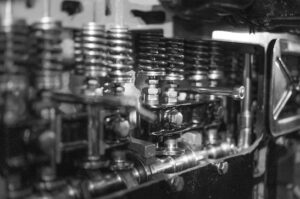 In manufacturing springs, a key performance indicator—one that may often be assumed if not taken for granted—is reliability. Whether a cell phone, a retractable pen, a garage door or a vehicle’s shock absorber, users expect that the spring in their application will work efficiently and consistently through innumerable cycles. An expectation perhaps, unreasonable or not, that they should or will outlast the machine or device for which they were designed for. But for the engineers who design custom springs, the thought of premature spring fatigue is not likely much of a consideration for most users.
In manufacturing springs, a key performance indicator—one that may often be assumed if not taken for granted—is reliability. Whether a cell phone, a retractable pen, a garage door or a vehicle’s shock absorber, users expect that the spring in their application will work efficiently and consistently through innumerable cycles. An expectation perhaps, unreasonable or not, that they should or will outlast the machine or device for which they were designed for. But for the engineers who design custom springs, the thought of premature spring fatigue is not likely much of a consideration for most users.
Nonetheless, as premature fatigue can affect a spring, and thus, the application’s reliability, fatigue performance is very much a factor when manufacturing springs. Because springs are mechanical objects, any spring subjected to prolonged or repeated stress for an extended period of time will become weaker. The spring material, after all, has a shelf life.
Elasticity of Springs
Springs are also elastic objects, designed to store energy until required to deflect a load from an outside force or stress and, once the energy is released, returns to its normal state. The measure of a spring’s elasticity then is its ability to repeatedly return to its original shape and size after a force has caused a deformation of the material as the energy is released. Though the force or stress may be a result of compression, extension, or torsion, the material’s elasticity will ensure that the spring will return to its initial size or position after the force is applied. But it can only be repeated through so many cycles. Eventually, when a spring cannot return to its initial position after a force is applied, then it has become fatigued and is considered permanently deformed.
Spring Fatigue
Premature spring fatigue can occur due to any number or combination of factors—the type of material and its strength, the stress conditions and rate of cyclic loading, surface quality, cracking, creep, or even manufacturing processes. If, for example, spring fatigue happens prematurely then it is likely that the stress on the material’s structural components was greater than the strength of the spring. The spring could not hold up to the cyclic loading as designed. During the design phase of springs, engineers will take into account these factors to ensure the spring will function over its operational lifespan as intended.
One sure method to improve the fatigue life of a spring is to select the correct material for the spring application. That material must hold the mechanical properties required for the spring to function as designed—tensile strength, resistance to corrosion, temperature, specific environments, and so on. The material must also be durable to avoid creep, a physical phenomenon that can cause the slow plastic deformation, i.e., the permanent deformation, of a material. Creep results from operational temperature extremes and the repeated stress and relaxation on a metal’s yield strength over time and, unless factored in during the design phase, can lead to premature spring fatigue.
Calculating the working stress on a spring can also help avoid premature fatigue. Working stress occurs between the fixed positions of a spring during operation. For example, where a loop or hook of an extension spring meets the spring’s body is a position subjected to increased working stress. If, say, the loop radius is too small or the hook is not large enough, then the working stress on that fixed position will likely lead to premature failure. To avoid failure caused by working stress at these fixed positions, the working life of a spring can be accurately predicted by calculation with 95% surety utilizing data drawn from Goodman diagrams. Another way to lower stress that can lead to premature fatigue would be to increase the wire diameter of the spring. The increase in size should be accounted for in the design phase.
Material surface quality should also be addressed during design to avoid fatigue cracks in the spring wire. One method, shot-peening, can favorably modify the material properties of spring material to improve its fatigue life. The process is intended to improve the overall material surface quality by reducing fatigue cracks that may otherwise propagate during cyclic loading.
Wear can also have adverse effects on spring material that leads to premature fatigue. For example, in compression springs, the elastic deflection should not exceed 85% of the available deflection. If coils are in constant contact with each other when deflected it will lead to increased wear and fatigue.
Specialized Spring Manufacturers
Springs are integral components used in a wide range of applications. To ensure a spring’s reliability, during the design process, engineers at James Spring & Wire Company take into account a number of factors that can affect fatigue performance. Contact us to learn more about how we can help you to properly manufacture springs for your product.

